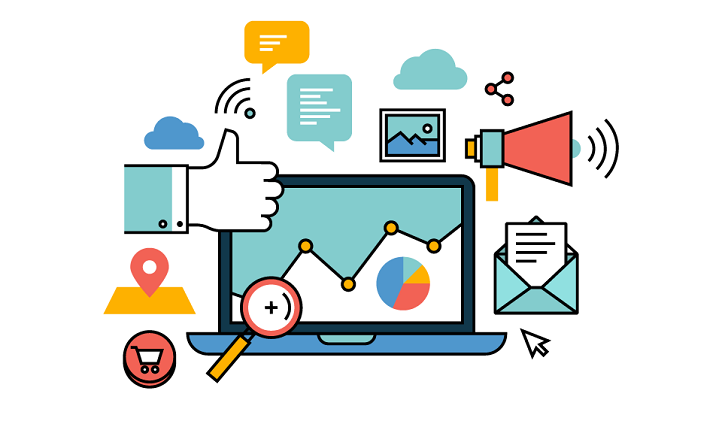
Everything is going digital. Some describe digitalization as a tsunami — I call it a wave of several tsunamis hitting the B2B world. Most businesses have heard the wake-up call and jumped on the bandwagon. Some are just getting started and are in panic mode to catch the high-speed train. Everything is going digital. Some describe digitalization as a tsunami — I call it a wave of several tsunamis hitting the B2B world. Most businesses have heard the wake-up call and jumped on the bandwagon. Some are just getting started and are in panic mode to catch the high-speed train. Regardless of where you are on the path to digitalization, B2B digital transformation is real and it’s here to stay.
The Evolution of Megatrends
Last year, I wrote about the revolution happening in e-commerce with the emergence of Amazon as a powerful force both in B2C but also in B2B. Last year is old news!
Read: Can the B2C Retail Apocalypse Reach the B2B World?
This year, it’s time to take a closer look at the megatrends impacting B2B and more specifically on the topic of digital transformation and its impact on pricing and commercial intelligence.
A decade ago, we considered mega-trends in relation to mega risk management such as overpopulation, climate change, or resource scarcity. For sure, technology development was considered a mega-trend but it wasn’t included in most top 5 lists for business. Things have changed significantly in just a decade. Disruption is all around us if you consider the list of mega trends shown below.
Industrial Disruptive Mega Trends
- Accelerated Commoditization
- Increased Competition (GAFAMs)
- Cocktail of Globalization and Regionalization
- Digitalization and Digital Transformation
- Data Revolution
- Mass Customization and Personalization
- Platformization and Uberization
- Consolidation (mega mergers)
This list is a combination of traditional business trends like consolidation and accelerated commoditization, with technological drift. Others are related to the current global political climate with the emergence of trade and currency wars. But half of these mega-trends are not related to technology and digitalization, which offers great business possibilities for those who anticipated and prepared. For those who did not, the race is on!
What Is Digitalization? Internal versus External Digitalization
Digitalization is a vast term and might mean different things to different organizations or teams. One thing is for certain though – technological advancements over the past five years have offered tremendous opportunities for internal efficiency improvement and external innovation opportunities.
Internal
From an internal perspective, digitalization has permeated the fabric of all organizations. While CRM and ERP have become very large industries over the years, new apps and software solutions are modernizing procurement, warehouse management, forecasting, demand generation, knowledge sharing, internal communications, and IT in general. Productivity gains can be significant. Firms are also leverage emerging technologies in predictive maintenance and IoT by connecting their assets and testing their value hypotheses prior to offering digital solutions to the market.
External
From an external perspective, organizations leverage their data to create new revenue models around their existing products and services or to create new models as stand-alone businesses. Data is the new oil and billions are now being invested in digital platforms, software solutions, and data-driven innovation. But that’s not all. The go-to-market space has been disrupted by emerging technologies such as CPQ, AI-based pricing, machine learning, and digital marketing.
At this stage of the technology explosion, the question is not when to get started and when to deploy digital solutions. The real question is how to keep up with progress, how to prioritize and sequence the investments, and how to ensure your culture can effectively absorb all these new technologies over a period of 2 to 3 years.
Impact on Pricing and Commercial Processes
There is no doubt that both pricing and commercial processes are impacted by the wave of digital tsunamis. As more companies embark upon digital transformation, their processes, reporting lines, structures, policies, and rules of engagement also have to be revisited very quickly. A B2B digital transformation, including both internal and external dimensions, cannot be done without a wide commercial transformation including sales, marketing, and pricing.
Watch for my next post on implications of digitalization specific to sales and pricing processes. In the meantime, if you’d like more information on how to prepare for the disruption of digitalization, watch Amazon at the Gates: Preparing for eCommerce Armageddon
